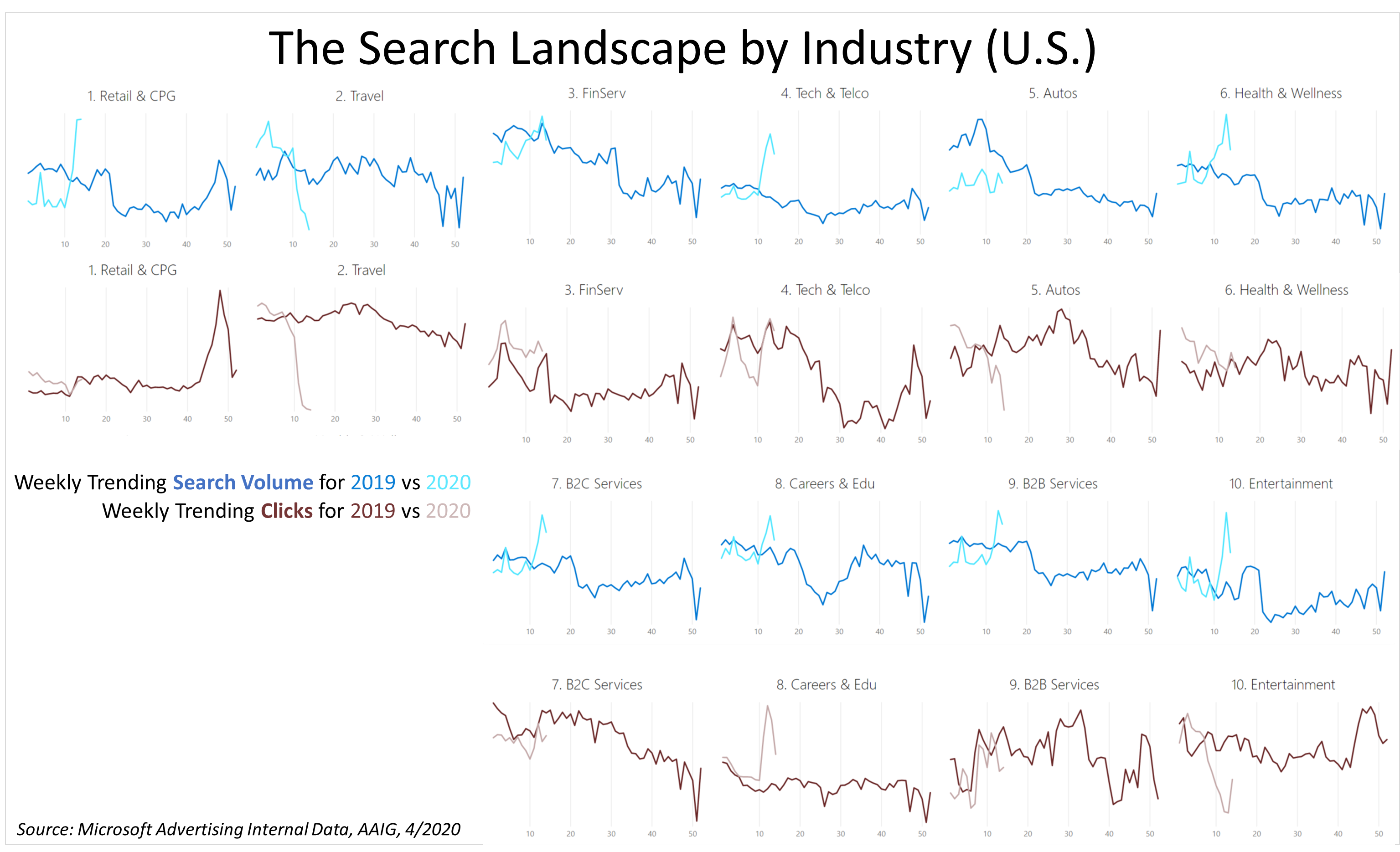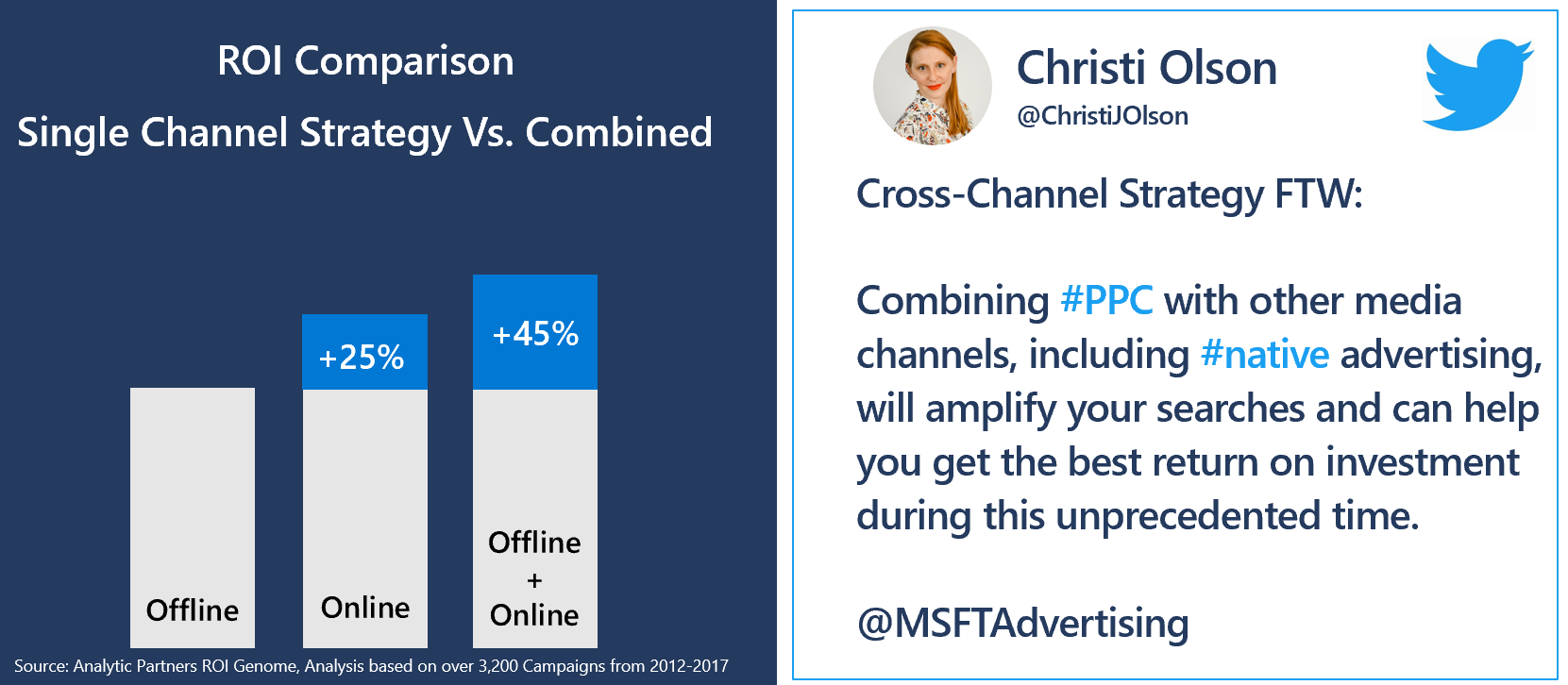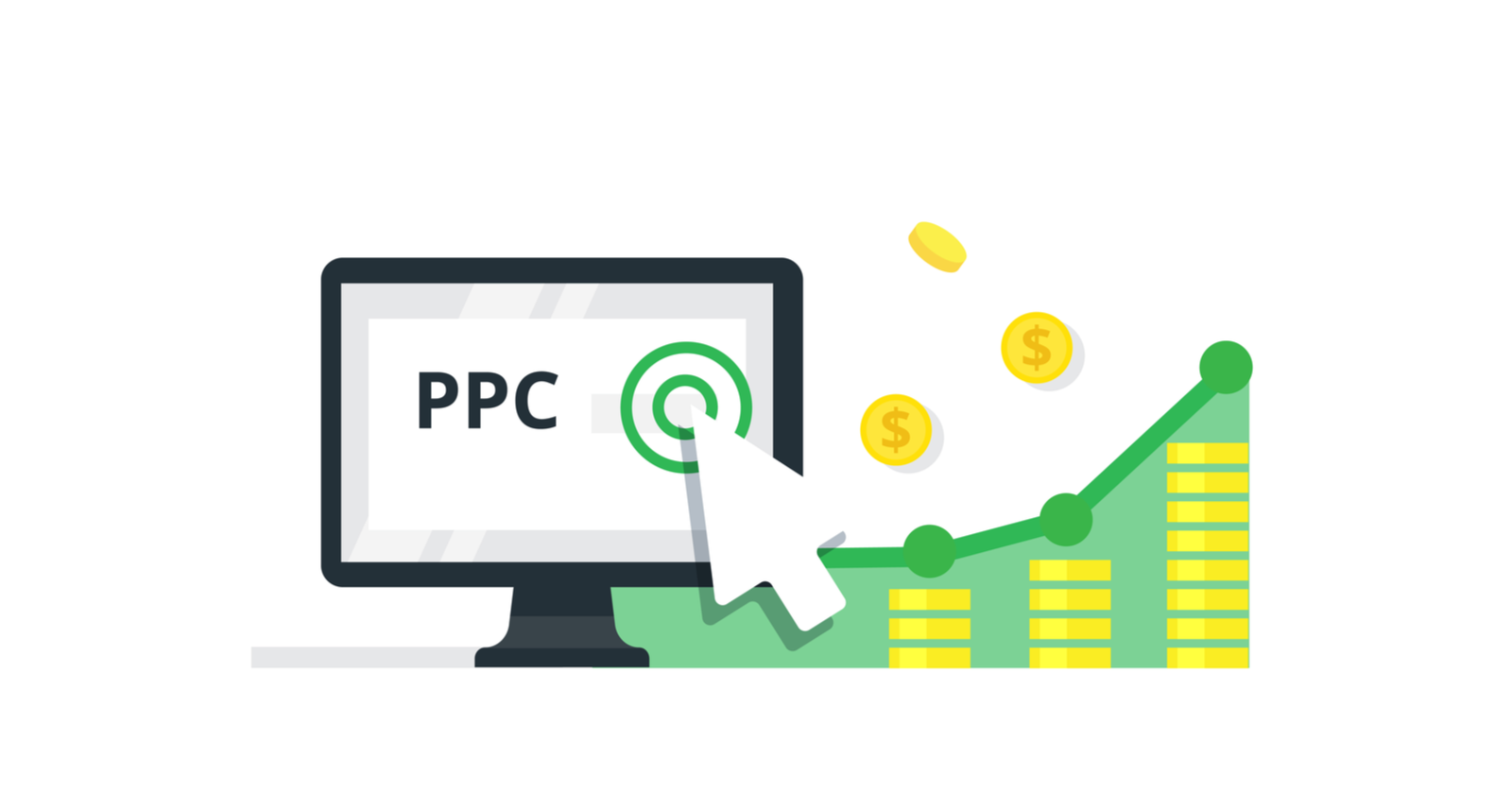There is a lot of anticipation toward the future.
What will the “new normal” look like post-COVID-19 for the economy and with respect to consumer behavior?
During these somewhat crazy and dynamic times, the strategies that worked pre-COVID-19 need to shift and change alongside consumer behavior.
Trends from Across Industries
The landscape has definitely changed across almost all industries.
No matter the industry, it’s fair to say that while digital transformation was the buzzword of the year for the last decade, it’s been actualized and realized across all industries in the last month as business models have been upended.
For me, it has been exciting to see how businesses have adapted and how marketers are playing a role as a consultant on how to not only adapt digitally but to communicate those changes quickly.
The search landscape is adapting as well.
Some industries are seeing a surge of searches and traffic as physical stores have closed driving traffic online.
Other industries are experiencing some of the most difficult times they have ever faced.
My partners in the Microsoft Advertising Analytics and Insights team have pivoted their work to provide regular industry level updates and insights on how COVID-19 is impacting search and click behavior.
Here are a few highlights of what they’ve uncovered so far.

Travel
Travel continues to be one of the most challenging industries during this global pandemic.
Search volumes have decreased dramatically, with up to a -90% decrease year over year.
This as consumers face uncertainty around local, regional, and international travel due to varying shelter-in-place restrictions and 2-week self quarantining required after traveling internationally.
The activities sub-category within travel is an outlier in the travel industry as consumers are searching for things that they can do near or close by. Consider regional and local advertising to reach consumers once shelter-in-place bans start to lift.
Retail
Retail has been one of the stronger industries during the global pandemic, as growth has shifted from in-person to online among a varying mix of sub-categories week to week.
At-home personal care products ranging from teeth whitening, waxing, personal grooming, and hair care searches are up year over year.
As Shelter-in-place orders went into place there has been an increase in DIY grooming and haircare.
There has been a 36% increase in searches around hair dyes and coloring and a 118% increase in clicks.
Simultaneously, the personal grooming category has seen a 79% increase in searches and a 146% increase in clicks.
The occasions and gifting sub-categories saw a significant spike earlier than usual for Mothers Day this year, with a year over year increase in terms related to virtual and video added to the normal celebratory search queries.
The Hobbies vertical has also seen an increase in search traffic year over year.
There is unmet consumer interest as growth in searches outpaces the click growth for hobby-related queries.
This includes queries related to genealogy, arts and crafts, birding, outdoor recreation activities, camping, gardening, cooking, model building, and home brewing.
Automotive
There has been a pause in traditional automotive sales, however, consumer interest in purchasing has persevered, just moving to a digital format.
In-market purchase queries increased in March and April, despite the shopping patterns and search themes shifting.
As economic uncertainty with jobs continues, there is some expected hesitation in purchasing big-ticket items such as new vehicles.
That said, search terms are indicating the intent to buy or lease “now” is up in part due to time-limited incentives, and consumers are adjusting to the evolving environment where they might have to buy cars online as we’ve seen a 59X increase in “online purchase” related terms.
A few query trend we’re seeing in the automotive space:
- Consumers are trying to understand which dealerships are open versus closed due to varying policies related to “essential” businesses. Creating clarity for your customers is increasingly important, especially if you are open today.
- Shoppers are increasingly looking for dealers, dealerships, and specific models “near me”, with these types of queries up 22% in the last 30 days over the previous 30 days.
- Shoppers are looking for “affordable” vehicles, with affordable related queries up 85% year to date.
- Leasing queries are up 51% in the last 30 days over the previous 30 days – indicating the consumers are looking for more affordable payments.
Within the automotive category, it’s not just car sales that have seen a shift.
Automotive insurance searches are up 44% year to date driven by consumers looking to reduce their insurance premiums.
Now is a good time for insurance to be bidding on terms related to “quote comparisons”, “affordable” and even new policy types such as “pay-per-mile” insurance where consumers will see a reduction in premium during the shelter-in-place mandates.
Health & Wellness
Searches were up year over year as consumers were searching for more information about coronavirus and viruses early on such as:
- Symptoms.
- Vaccines.
- Treatments.
- Queries around high-risk underlying conditions such as asthma and smoking.
There was also a surge in queries around over the counter (OTC) products such as masks, sanitizers, and disinfectants.
A significant share of the net new volume related to coronavirus concerns come from unique queries that were not seen in 2019.
However, only 3% of the new unique queries included specific references to coronavirus or COVID-19.
Vaccine searches have increased across the board, with nearly one-third of all vaccine searches in April containing a “coronavirus”, “covid”, or “covid19” in the search query.
Searches for the flu vaccine increased 478% year over year with nearly 21% of searches containing a coronavirus related term in the query.
As we’ve moved further into the shelter-in-place restrictions searches around depression have increased 3X and anxiety 2X.
5 Immediate PPC Strategies That You Can Act Upon Today
What can you do in the short term to have a lasting impact on your search campaigns?
A lot.
1. Be Visible
The consumer decision journey for many industries, especially large ticket items, has lengthened due in part to economic uncertainty. (Unemployment claims are some of the highest on record, stock market volatility.)
It doesn’t mean consumers aren’t searching. On the contrary, we’re seeing searches increase across industries.
What it does mean is the length of time from when they start searching to purchasing has extended.
As the length of the consumer decision journey extends, there are more opportunities for consumers to research before they make their decision.
Some areas to consider:
Cross-Channel Strategy #FTW
Combining paid search with other media channels from social to display to native, will amplify your search strategy.
Analytics Partners ROI genome evaluated 3,200 campaigns between 2012 and 2017 and saw a 25% lift in ROI for those who used a multi-channel digital strategy as compared to those focused on a single channel.

Reach Customers Through Native Ad Placements
Native combined with search can help reach new audiences and drive growth.
Update Your Business Data
There is literally no consistency right now as each city, county, and state has its own set of rules and regulations, and there is no consistency with the enforcement of regulations.
Businesses can, however, clearly communicate to their customers how they can engage with you.
- Keep your business listings updated with potential closures or new hours related to COVID-19.
- Use SpecialAnnoucement schema-markup to pass-along the temporary updates to the search engines so they can be included in various SERP experiences.
2. Adjust KPIs & Attribution
In the last month our world has changed, your key performance indicators (KPIs), whether you want to admit to it or not, have probably also changed.
Additionally, with the consumer decision journey lengthening, it might be time for you to evaluate if the current attribution model you are using is helping or hurting your strategy.
First click attribution is useful for strategies where you are looking to acquire users who may not convert right away.
Last click attribution is useful for strategies where you are trying to optimize for more immediate conversion.
If your business model has changed and the consumer journey has lengthened, it’s worth considering if you should re-evaluate your attribution model so that it works better with your updated marketing strategy.
Last but not least here, document, document, document.
Use annotations in Google Analytics to note when you’ve changed your strategy, KPIs and attribution, so that you remember when you are looking back in the future.
Make yourself a note to re-evaluate these decisions every so often, whether that be each month or each quarter.
3. Update Your Messaging
No one wants their ads to come across as tone-deaf.
Everyone is experiencing stress, and the main takeaway is that now is the time to be thoughtful with your messaging in ad copy and visual imagery.
Ask yourself:
- Does your messaging align with the current situation? This is the actual tone, ad copy, all the associated extensions, and the visual imagery. Don’t just think about your situation, but your customers’ situation.
- Is your ad relevant? Are the products you are focusing on relevant (or even in stock)?
- Check your calls to action and make sure they are relevant and up to date.
- Use call-out extensions to highlighting your offers or ways your business has changed (i.e. closures, hours dedicated for high-risk populations, social distancing limitations in-store, curbside pick-up, contactless delivery, free shipping, etc.)
- Do you have a strategy or plan in place for changes to messaging as regions (cities, counties, states, even countries) adjust their shelter-in-place mandates?
Will you update your ad copy, the offers, and the messaging to consumers in those regions?
A side note here, I’m not saying every business should adjust their messaging by region.
However, if you are a business that operates in multiple areas (think McDonald’s, Win Dixie, Walmart) and individual stores have different hours and services being offered, it’s my humble opinion that you should be planning a strategy for how to update your store information as the situation changes region by region.
Remember, what worked last quarter, last month, heck even last week may already be outdated.
4. Balancing Between Automation & Manual Optimization
Things are moving quickly.
These dynamic shifts in the environment mean that it’s more important than ever to strike the balance between automation tools while simultaneously monitoring performance manually.
Now is not the time to set it and forget it. You’ll need to start monitoring performance with your human eye to modify strategies as needed.
Automation can help you with consistency especially when we are all stretched pretty thin.
What can automation help with?
Automated & Smart Bidding
I was originally leary when it comes to using automation for bidding during periods where the signals around behavior and intent are dynamic and changing quickly.
Automation needs good data for the algorithms to build its predictions.
In the search platform, algorithms have been able to fairly quickly respond to the shifts in behavior and understand the changing signals to make adjustments to bidding strategies.
I’m not recommending that you switch to manual bidding, on the contrary. If you’ve been using manual bidding strategies, I’d recommend switching sooner rather than later.
Automated bidding is going to help you stay on top of the dynamic marketplace.
If your business is seeing volatility when using automated bidding, it may be worth checking out enhanced CPC bidding to maintain and improve performance.
What you do need to do is establish how often you want to evaluate and potentially update your goals regularly based on performance.
That performance could be time-bound (i.e., weekly) or it could be geographically bound (a.k.a., regionally).
Either way, keep your campaign goals up to date and enable automated bidding to do some of the intensive optimizations for you.
Safeguard with Responsive Search Ads
Responsive search ads are a good automated tool to change your messaging and approach, while automatically optimizing ad copy.
Now is a great time to use RSA to test various messaging strategies such as delivery options, different deals, or offerings automatically.
Scripts
I love myself a good script to help see trends that I might have missed otherwise.
This comparison script by Martin Roettgerding compares search behavior in your account before and during set time periods.
This regional script by Frederick Vallaeys allows you to track PPC performance metrics and how they changed when specific government actions related to the COVID-19 pandemic took place.
Automated Recommendations
The recommendations tab is an AI-driven interface that can help you keep up with emerging queries due to the increases seen in net-new queries in search, improve visibility with the best bids by position.
Set aside time to do regular manual checks on your account, but now is a good time to automate appropriately.
5. Shift Your Approach
Finally, in this “new normal” it seems like everything we know has shifted a little bit to the side.
Nothing is the same as it was pre-COVID-19.
Stores have closed. Services have been altered.
Manufacturers have shifted what they are producing based on the needs and demand which is impacting aspects of the supply chain.
Businesses are looking for new and innovative ways to keep running.
What is happening within your specific industry?
Who are your competitors, have they changed?
Are your competitors switching their products, services, or offerings to meet the changes in demand?
Are there gaps in the marketplace? Can you address those gaps to serve and reach the new customers?
You might even be questioning if your audience has shifted and changed?
With all these changes, it’s a reminder to shift your approach to marketing.
Shift your approach to the products you are showcasing – how you reach and engage with new audiences, and connect with your existing audience in new ways.
Here are two strategies you can use now to shift your approach to product ads and to audience targeting.
Product Ads
The marketplace for shopping is changing quickly.
Within Microsoft Advertising we’re seeing new shopper behaviors and search queries.
Right now is a great time to re-evaluate which products you are featuring and focusing on.
- Do the products you’re advertising still make sense?
- Are there products you need to add due to the shifts in consumer demand or behavior?
- Have you created new products that you haven’t included in your product feeds?
To ensure your inventory is available and eligible for the new shoppers and new queries, make sure you include your entire product inventory, including:
The manufacturer part number (MPN).
- Global trade item number (GTIN).
- Brand.
- Shipping cost.
- Color.
- Size.
- Multiple images to provide the richest customer experience.
With your shopping campaigns you can get started with the following:
- Set up Product-Audiences (dynamic remarketing) to bring shoppers back to your site based on the products they were looking at previously on your site.
- Set up local inventory ads for physical stores that are still open so that you can promote the inventory that is available. Local inventory ads have launched several new experiences and opportunities within the search results pages including a map view for retailer-specific searches and a shopping tab where shoppers can filter by product availability nearby.
- Use automated bidding strategies such as Enhanced CPCs, Maximize Clicks, and Target ROAS for shopping campaigns.
- Expand your shopping campaigns on the Microsoft Audience network to grow your volume and get in front of potential new customers.
While you might think you need to pull back on products that are in high demand (think hand-sanitizer, cleaning supplies, or even toilet paper last month and this month think educational toys for children, wine/beer for their parents) it’s actually time to double down.
Consumers couldn’t find products in-store and started the virtual hunt to find them and have them delivered.
Do you want to be part of that consideration set or miss out on reaching consumers?
I’m not trying to add to FOMO, but I personally know that I shopped from at least five new stores I had never considered in the past while looking for hard to find items.
I’ve gone back to three of those stores in the last month to make secondary purchases.
On Microsoft Advertising network, Product Ads clicks are up 55% compared to last year and CPCs have seen a 20% decrease year over year.
Audience Targeting
It’s time to think big with audience targeting.
With everything else shifting your audience has probably shifted a bit too. It’s time to capture or recapture your shifting audience.
Here are a few ideas you can use to get started:
- Adjust your user recency windows and creating audiences for both shorter-term (1, 3, 7, and 14 days) and longer-term (30, 60, and 90 days) look-back windows. Think through how you might adjust messaging to the consumers based on the look-back window.
- Add custom combination lists and IF functions can help you land even more effective messaging with your audiences. Consider building new lists with custom audiences, and applying different messaging strategies based on what you know about them.
- Best customers (longest tenure customers).
- Most recent purchasers.
- Logged In /Loyal customers (individuals how have logged into the website or loyalty program).
- Frequent purchasers (individuals who have purchased more than X times).
- Cancellations.
- Consider adding tangential in-market audiences to reach new customers. For instance, if I’m in the market to purchase a car, I’m going to need insurance. If I’m looking to buy a house, I’m also potentially in the market for many different types of home services from contractors, painters, plumbers, and electricians, to landscaping or interior decorating/design and even new furniture. Think outside the box and the types of tangential services or products to your own, and how you can apply those tangential audiences to reach customers in new ways.
- Combine broad match with audience-based targeting, a.k.a., broadience, to reach your target audience while strategically broadening your keyword lists.
- Combing negative audience strategy on exact match and upper funnel to expand your reach and target brand new customers. For this strategy, I would potentially combine multiple lists together to create an uber list (like 90-day site visitors, 30-day site visitors, recent purchasers, logged in or loyal customers) and then apply a -100% bid modifier.
- Consider a direct competitor compete strategy, where you use lists for your best customers who are also searching for your direct competitors’ brands – this is the potential churn segment.
The opportunities for audience targeting and the strategies you use for creating new segments with unique messaging and reach is endless.
The audience targeting world is your oyster and you can be as creative as you want to expand your reach to new customers or maintain the loyalty of your existing customers.
To Sum Up
While we’re all figuring out the new normal, you can shift and adjust your current strategies to keep up with the dynamic changing marketplace.
Stay healthy.
Stay sane.
And most of all, continue learning about the shifts happening in your industry and testing new ways to reach customers and optimize your PPC campaigns.
More Resources:
- It Isn’t Business as Always: Adapting PPC Strategy in Changing Times
- 8 Things Advertisers Say They’re Doing During COVID-19
- 5 Tips for Managing PPC During the Coronavirus Outbreak
Image Credits
All screenshots taken by author, May 2020





